Art & Exhibitions
Uli Sigg’s Idiosyncratic Collection of North and South Korean Art Is Going on View in a Rare Show in Switzerland
The two countries have been divided by a hard border since 1953, but their work hangs side by side in Switzerland.
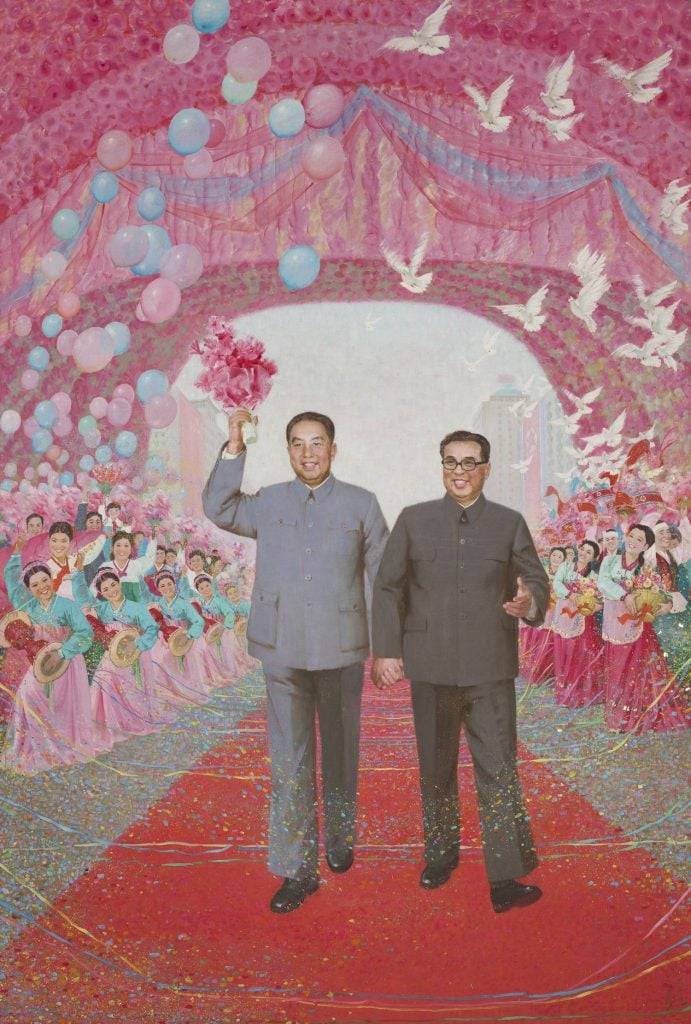
The two countries have been divided by a hard border since 1953, but their work hangs side by side in Switzerland.

Kate Brown

An ambitious new exhibition in Bern, Switzerland, has brought together artists from the bitterly divided nations of North and South Korea, which have long prevented artistic exchange.
In “Border Crossings: North and South Korean Art from the Sigg Collection,” 90 works by 30 artists made between the 1970s to the 2010s hang side by side the divergent histories of the two nations, which have been divided by a hard border since 1953.
The show, at Kunstmusem Bern, primarily hinges on the collection of Uli Sigg, who was the former Swiss ambassador to China and North Korea. He loaned 75 pieces that he acquired during the late 1990s when he was posted in the region, as well as works from South Korea and China that he began to acquire afterward.
It is a rare opportunity to see North Korean art, which rarely exits the country. The works on view from the country are all done in the Socialist Realist style and are largely propagandist paintings. There is a large painting by North Korean artist Pak Yong Chol called The Missiles depicting Kim Il Sung and Kim Jong Il jubilantly looking on as rockets shoot off.
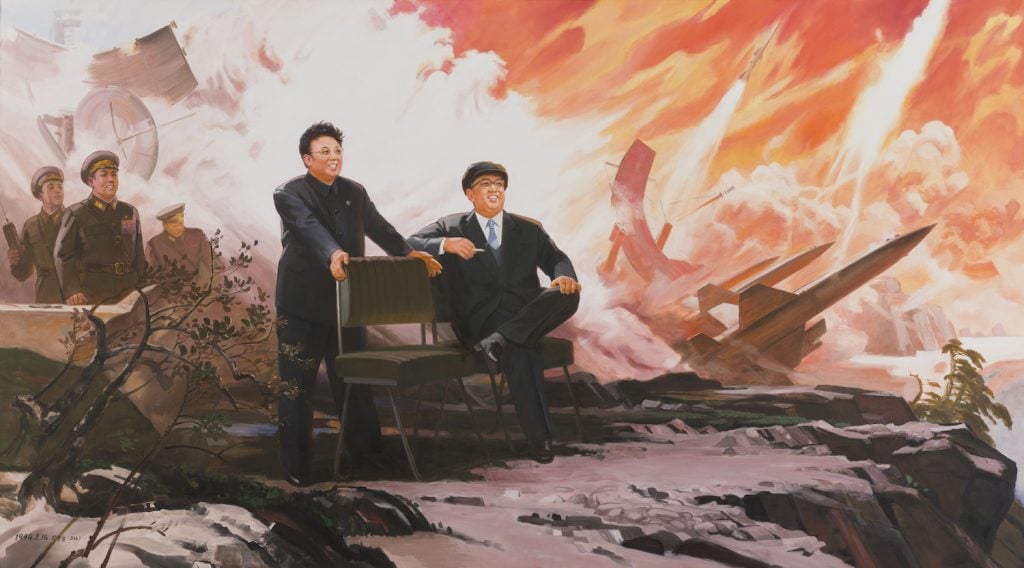
Pak Yong Chol, The Missiles, (1994-2004). Photo: Sigg Collection. Mauensee © the artist.
The exhibition’s curator, Kathleen Bühler, said she strived to not make “hasty judgements” about the North Korean works, and to see them “against the background of the conditions under which they were made.” As a result, works on view are not grouped by nation but by theme.
“The accusation that North Korean art is mere propaganda explains only one part of these works,” Bühler said in a statement. “Because all art is always also an expression of the ideology of its time, and directly or indirectly conveys something of its living environment.”
Other works in the show come from the collection of Swiss activist Katharina Zellweger, who was a humanitarian in North Korea in the 1990s. She loaned the museum a selection of North Korean stamps and posters.
The exhibition also includes Chinese perspectives from artists who grew up on the border with North Korea. In He Xiangyu’s video The Yellow Swim Caps, the artist swims across the North Korea-Chinese border river Yalu to imagine what defectors might experience illegally trying to cross into China.
Other works show the moments of permeability that can exist along the 155-mile border. With the help of Chinese middlemen, South Korean artist Kyungah Ham managed to smuggle her embroidery designs into the northern nation where they were reworked by North Korean embroiders in a transgressive collaboration.
The show also reminds viewers of Kim Jong Un’s own curious relationship to border crossings: The current leader of North Korea lived in Bern for 11 years as a child, disguised as a family member of the North Korean embassy staff.
Border Crossings: North And South Korean Art From the Sigg Collection is on view at Kunstmuseum Bern from April 30 through September 5.
See works on view at the museum below.
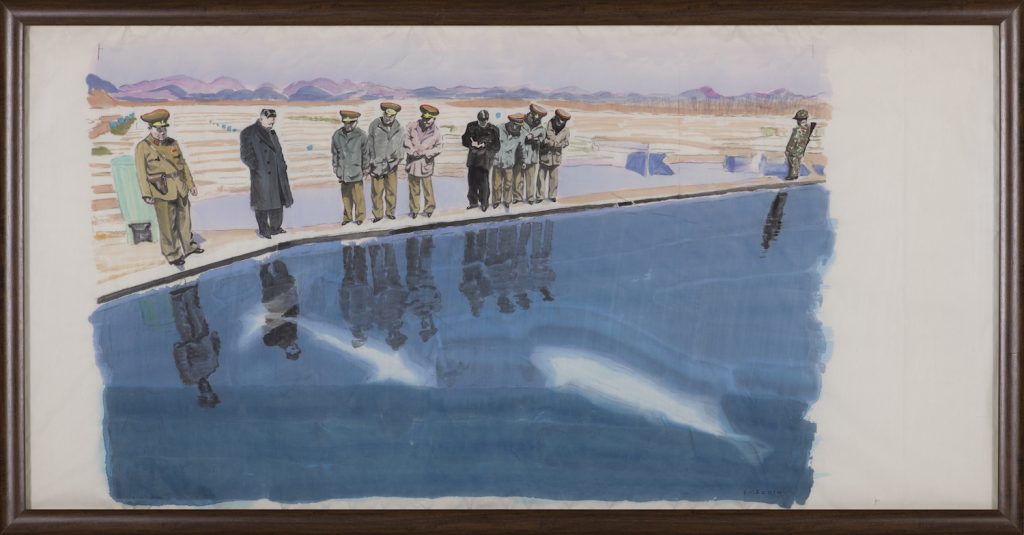
Feng Mengbo Two Great White Sharks (2014). Photo: Sigg Collection, Mauensee © the artist.
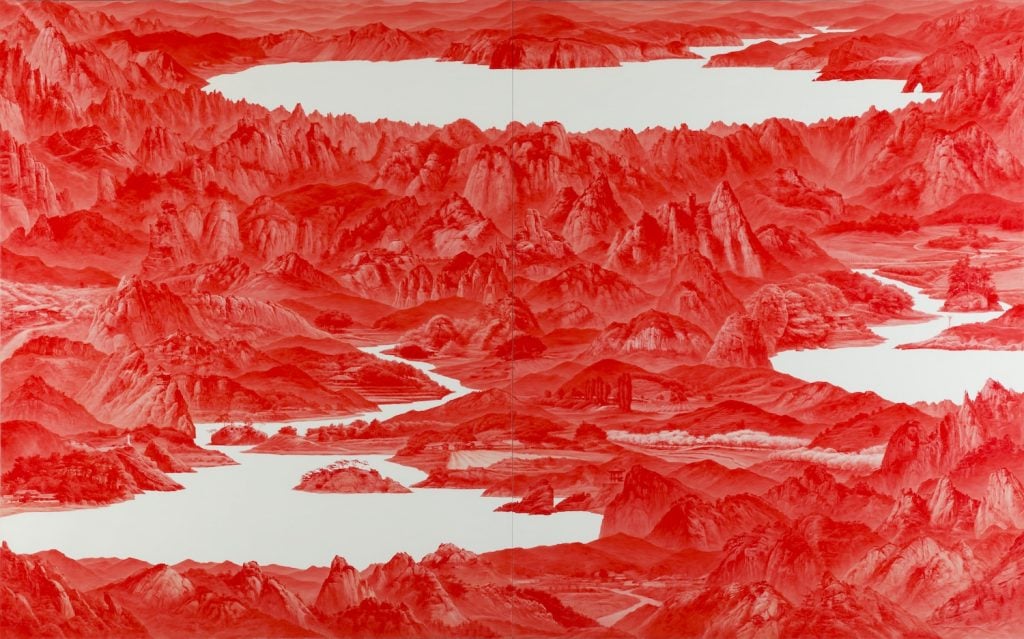
Sea Hyun Lee, Between Red33 (2007). Photo: Sigg Collection, Mauensee © the artist.
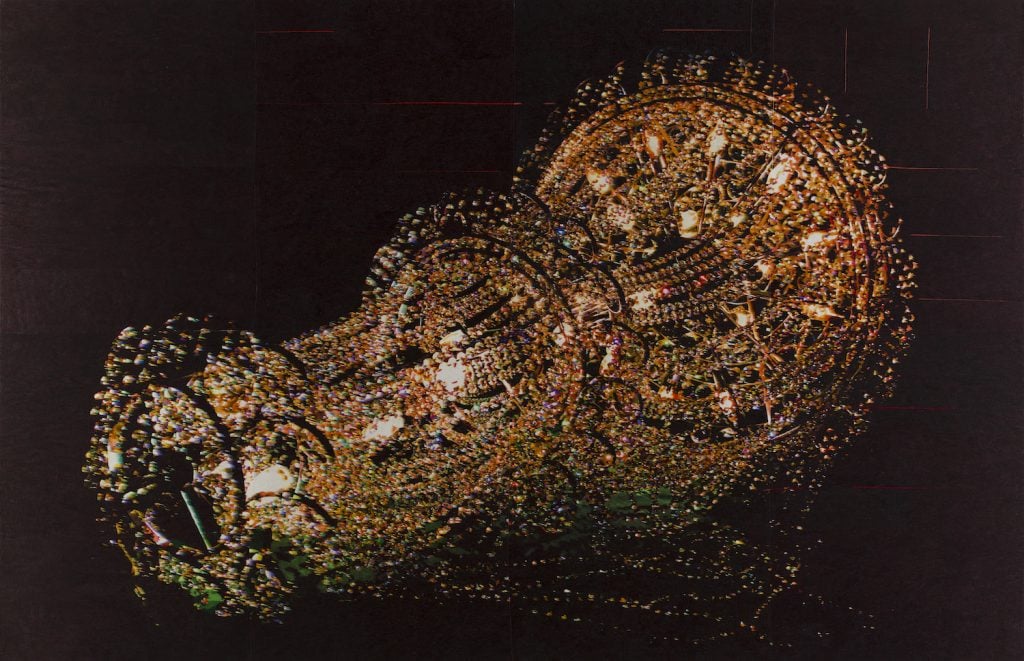
Kyungah Ham, Chandelier (2012-13). Photo: Sigg Collection, Mauensee © the artist.
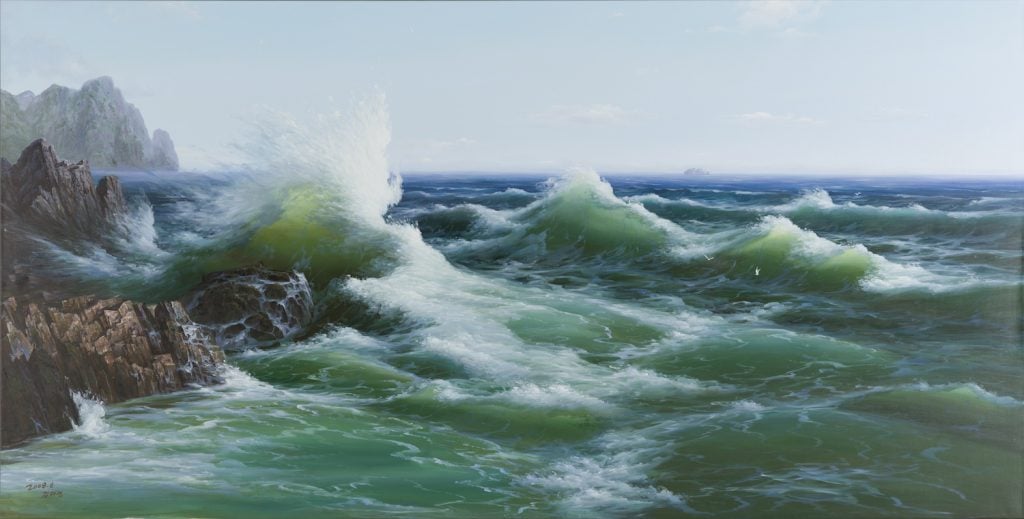
North Korea Collective, The Sea (2008). Photo: Sigg Collection, Mauensee. © the artist
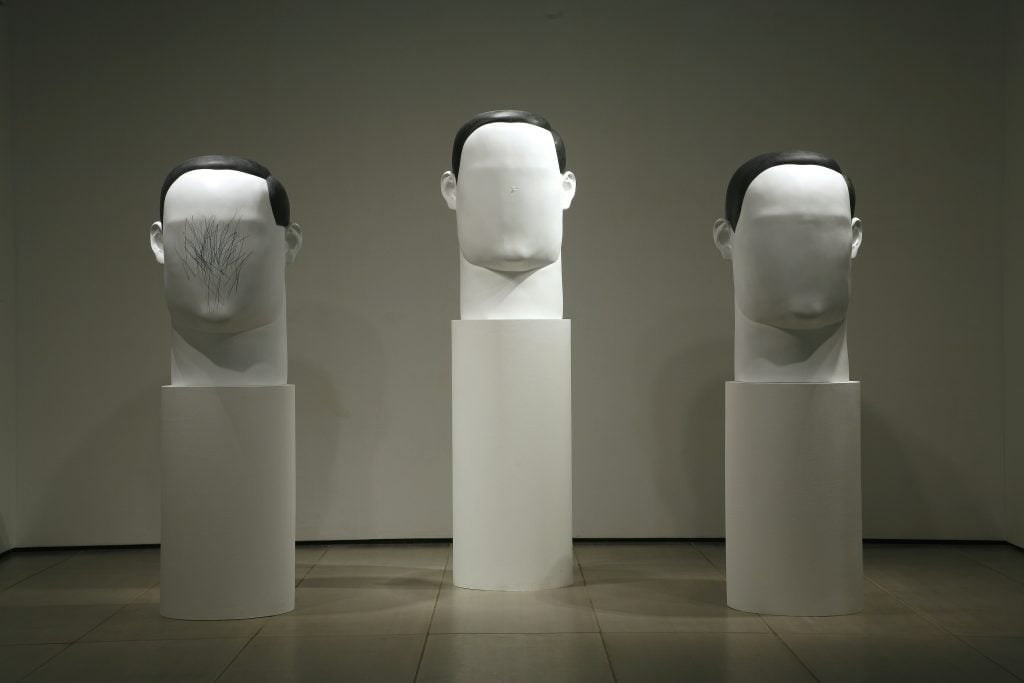
Inbai Kim Deller hon Dainy (3 Portraits) (2007). Photo: Sigg Collection, Mauensee © The artist.
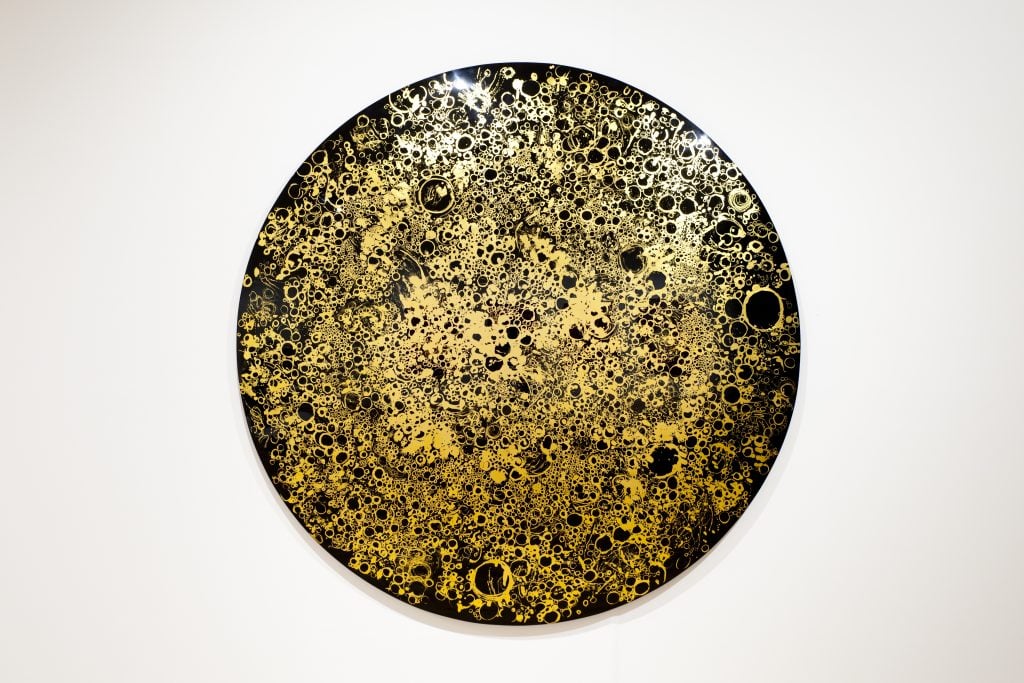
Unkyung Hur Scopic, Image 3 (2014). Photo: Sigg Collection, Mauensee © the artist.
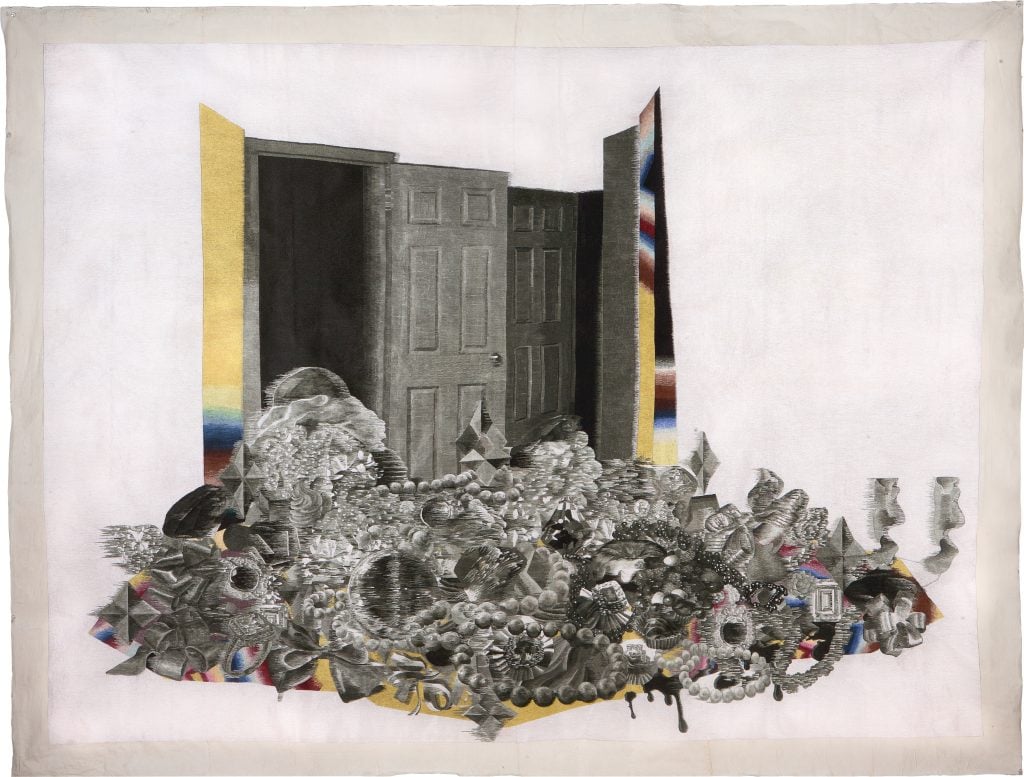
Kyungah Ham, Sweet-Sweet & Bling-Bling (2009-10). Photo: Sigg Collection, Mauensee © the artist.